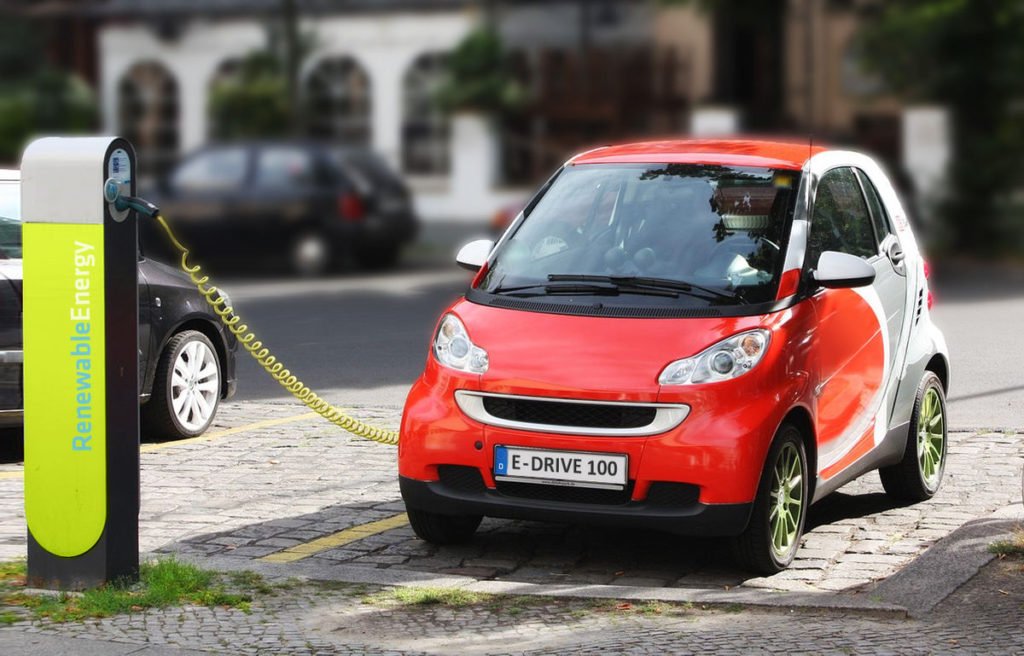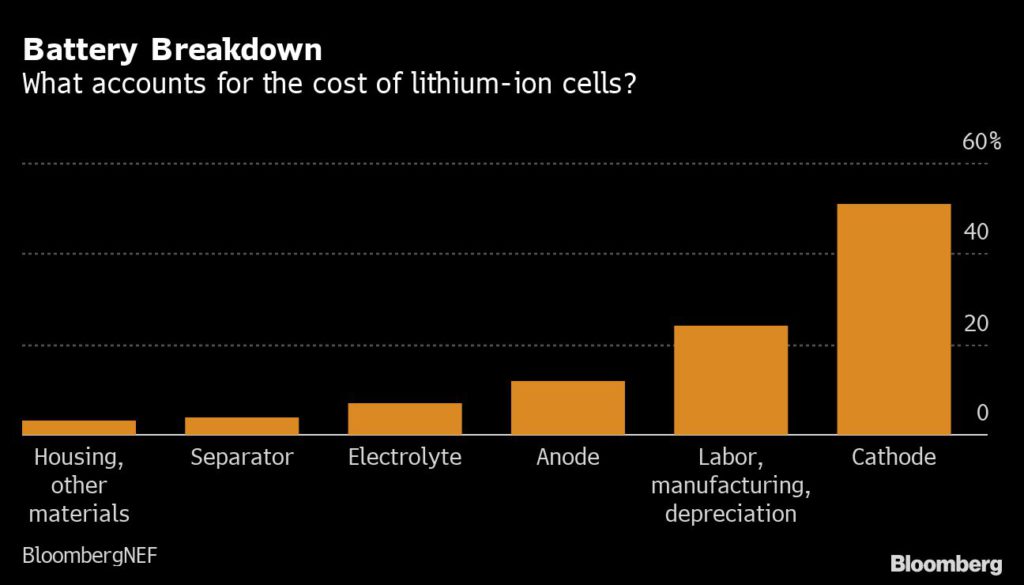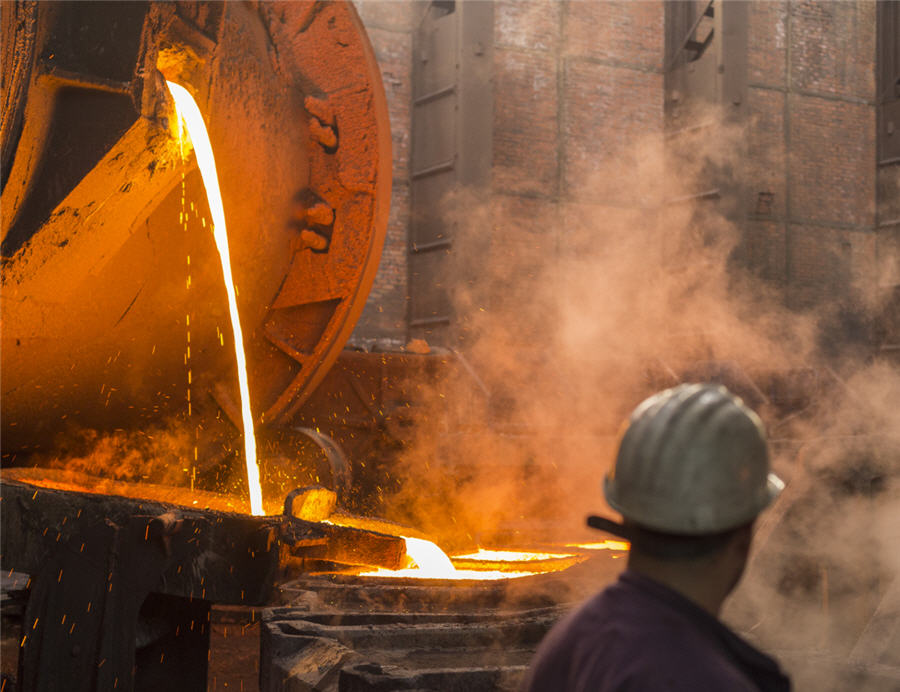EVs have lithium booming — and this time, there is no bust in sight

Lithium is hot—again—though this time the rally looks to have more staying power.
The market has exploded, with a benchmark index more than doubling in 2021 and key prices in China hitting records. Driving the frenzy is the silvery metal’s allure as a commodity of the future: It’s one of the key components for the rechargeable batteries used to power electric vehicles.
Lithium has been down this road before. Prices more than tripled from early 2015 to a record in March 2018, only to collapse again as output rapidly expanded. Analysts and experts say this time is different because the EV boom has well and truly started. Producers have also learned their lesson from the last crash and are now preaching discipline.
The upshot is that supplies are tight enough to force battery makers to take on long-term contracts that are more favorable to producers. Some are even taking the bold step of buying up mining assets. In the end, lithium prices could be so high that it raises costs for batteries and EVs just as the world needs more clean-energy sources.
Suppliers in driver’s seat
“It’s kind of like revenge of the miners,” said Joe Lowry, an independent consultant known as Mr. Lithium for his decades in the industry.
“The suppliers are in the driver’s seat, and it’s going to stay that way for a while,” he said.
The dynamic means demand will likely outstrip production over at least the next five years, Morningstar Inc. predicts.
There aren’t a lot of new mines being built, and the few projects that are underway probably won’t ramp up until mid-to-late 2023, according to Chris Berry, president of industry consultancy House Mountain Partners.
Berry forecasts prices could jump another 15% by next quarter to reach about $30,000 a metric ton in the spot market.
While the metal accounts for a small percentage of the battery cost for an EV, a sustained period of higher prices of battery-cathode materials—including lithium, nickel, and cobalt—will likely delay the point at which EV batteries reach price parity with internal combustion engine vehicles, a crucial factor in the mass adoption that’s required for a greener future.
“If there are any delays to the planned supply response within the next six months, I certainly don’t see any downside to lithium pricing,” Berry said. “There’s a huge need for investment.”
The lithium story is similar to the dynamic being played out across a wide range of commodities, including oil and natural gas. Starved of capital in the last several years and facing new investor demands to focus on sustainability, production expansion for many raw materials has slowed. Now, supplies are tight just as demand is roaring.
There’s no sign yet that demand—from those who can afford the hefty EV price tags—will start to slow. Rental car giant Hertz Global Holdings Inc. just placed an order for 100,000 Teslas in the first step of an ambitious plan to electrify its fleet, the single-largest purchase ever for EVs.
Global lithium consumption is estimated to grow fivefold by end of this decade, according to BloombergNEF.

Supplies are expected to be so tight that it’s sparking a wave of dealmaking.
A number of acquisitions of lithium miners have been announced in recent months, including a proposed takeover of Millennial Lithium Corp. by the world’s largest battery maker. Two Chinese companies sparked a bidding war for Canada’s Millennial, which has lithium assets in Argentina, with Contemporary Amperex Technology Co. eventually outbidding Ganfeng Lithium Co.
To be sure, it’s not clear how long the newfound discipline among miners will last.
Albemarle Corp., the world’s top lithium producer, and its partner Mineral Resources Ltd. just announced a plan to restart the mothballed Wodgina mine in Australia to cash in on surging prices. Chile’s government is also offering new contracts to tap the world’s biggest reserves of lithium—though it would be years before that production would hit the market.
The current output moves can’t “swamp prices because of how much demand is going to grow in 12 months,” said Lowry, the veteran consultant.
“EVs are booming. Battery demand’s booming. You don’t have a lot of new capacity coming on anytime soon,” he said. “You’ve got a perfect storm right now.”
(By Yvonne Yue Li and James Attwood)
ALSO READ: TSLA la land: Tesla vs Volkswagen 2021 battery power comparison
More News
China’s copper smelters rue Beijing’s curbs on US raw materials
China’s swift retaliation in matching Washington’s blanket 34% levies is likely to bring US shipments of copper scrap to a halt from next month.
April 09, 2025 | 09:35 am
Alphamin to resume Congo tin mine, shares rally
Alphamin said the insurgents have now withdrawn eastward, and the company will initiate a phased resumption of operations.
April 09, 2025 | 09:18 am
Mali state gold mining revenue jumps 52.5% in 2024
The rise in state revenue comes despite a 23% plunge in industrial gold production.
April 09, 2025 | 08:11 am
{{ commodity.name }}
{{ post.title }}
{{ post.excerpt }}
{{ post.date }}




Comments